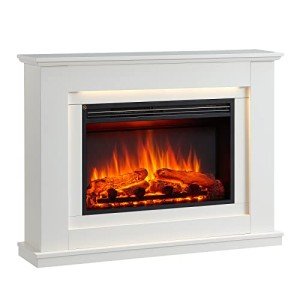10 Healthy Habits For Fireplace

The Fireplace: A Warm Embrace of Tradition and Comfort
Fireplaces have actually been an important part of human habitation for centuries, acting as a source of heat, a meeting place, and a sign of convenience. While the modern variations might vary remarkably from their ancient forefathers, the appeal of a fireplace withstands. This article explores the numerous elements of fireplaces, including their history, function, types, and upkeep, while also addressing regularly asked concerns.
The Evolution of Fireplaces
Fireplaces go back to prehistoric times when open flames were used for cooking, heating, and defense from wildlife. Over the centuries, fireplaces progressed from easy fire pits to the advanced performances we see today. Here is a brief timeline of their advancement:
- Prehistoric Era: Cavemen used open flames for heat and cooking. Wind and smoke typically blew into homes.
- Middle Ages: Stone and brick fireplaces became common in homes and castles, including chimneys to carry smoke outside.
- Renaissance: Elaborately designed mantels emerged, and fireplaces ended up being centers of social interaction.
- Industrial Revolution: Innovations in heating products resulted in a variety of designs and functionalities.
- Modern Era: The advent of gas, electric, and bioethanol fireplaces supplied cleaner alternatives to traditional wood-burning units.
Table 1: The Evolution of Fireplaces
| Period | Qualities |
|---|---|
| Prehistoric Era | Open flames for warmth and cooking |
| Middle Ages | Stone and brick structures with early chimneys |
| Renaissance | Elaborate mantels, social centers |
| Industrial Revolution | Varied designs, introduction of brand-new products |
| Modern Era | Gas, electric, and bioethanol choices |
The Purpose of a Fireplace
Fireplaces serve dual functions: they provide physical heat and produce a psychological environment. Online Fireplaces UK collect around the fireplace to bond, share stories, and delight in a cozy setting. The glow of a fire can be calming, contributing to a sense of relaxation and intimacy. Beyond individual pleasure, fireplaces likewise use functional benefits, consisting of:
- Home Heating: Effective heat source, specifically in cooler environments.
- Increased Home Value: A well-designed fireplace can improve the visual worth of a home.
- Emergency Heating: In case of power interruptions, wood-burning fireplaces can serve as an important heat source.
- Aesthetic Appeal: A centerpiece that adds to interior decor.
Types of Fireplaces
Today, fireplaces can be found in various styles and fuel types, accommodating a diverse variety of preferences and settings. Here are some common types:
Wood-Burning Fireplaces:
- Traditional fire pits
- Timeless masonry fireplaces
- Need significant maintenance and chimney maintenance
Gas Fireplaces:
- Available in both direct vent and ventless ranges
- Easier to use and keep than wood-burning fireplaces
- Offer instantaneous heat with a flick of a switch
Electric Fireplaces:
- Offer associated heat sources without real flames
- Often created to imitate traditional fireplaces
- Ideal for smaller sized spaces and homes without a chimney
Bioethanol Fireplaces:
- Use bioethanol fuel, offering a sustainable alternative
- Require no ventilation and can be placed anywhere
- Safe and easy to preserve
Table 2: Types of Fireplaces
| Type | Fuel Source | Functions | Upkeep Requirements |
|---|---|---|---|
| Wood-Burning | Wood | High ambiance, heat source | Regular chimney cleaning |
| Gas | Gas or gas | Immediate heat | Very little, occasional servicing |
| Electric | Electricity | Easy setup | Extremely low upkeep |
| Bioethanol | Bioethanol fuel | Ventless, portable | Low, generally cleaning |
Maintenance and Safety Considerations
Owning a fireplace involves particular duties, specifically regarding its safe operation and long-term maintenance. Here are very important upkeep pointers and safety guidelines:
Maintenance Tips:
- Annual Inspection: Always have your chimney and fireplace examined a minimum of when a year by a certified professional.
- Routine Cleaning: Clean out ashes and debris after each use, and ensure the flue is open before starting a fire.
- Check for Cracks: Inspect masonry for fractures or damage to avoid structural concerns.
- Usage Proper Fuel: Only usage dry, experienced wood for wood-burning fireplaces; do not burn cured wood.
Safety Guidelines:
- Install Smoke Detectors: Ensure smoke alarm are functional, checking them regular monthly and replacing batteries as needed.
- Keep a Fire Extinguisher: Have one neighboring, even if a fireplace is utilized occasionally.
- Monitor Flames: Never leave a fire ignored, and make sure children and pets are kept track of around the fireplace.
Often Asked Questions (FAQs)
1. How can I decrease smoke from a wood-burning fireplace?
To reduce smoke, usage dry, experienced wood, and guarantee that your chimney is tidy and unblocked.
2. Is it safe to use gas fireplaces during a gas leak?
Never use a gas fireplace throughout a gas leakage. Right away leave the area and contact gas services for help.
3. Can I install an electric fireplace myself?
Electric fireplaces are generally simple to set up, but it is suggested to seek advice from professionals to make sure safety and compliance with regional building codes.
4. What is linked web page of fireplace for small areas?
Electric fireplaces or bioethanol designs are typically best for small areas, as they do not need substantial ventilation or structural modifications.
Fireplaces have actually transcended their initial purpose of supplying heat to become cherished components of home style and domesticity. They evoke memories of heat, events, and togetherness while offering practical advantages that boost modern living. By understanding the various types of fireplaces, their upkeep, and security practices, house owners can delight in the timeless appeal of this beloved function for generations to come.

